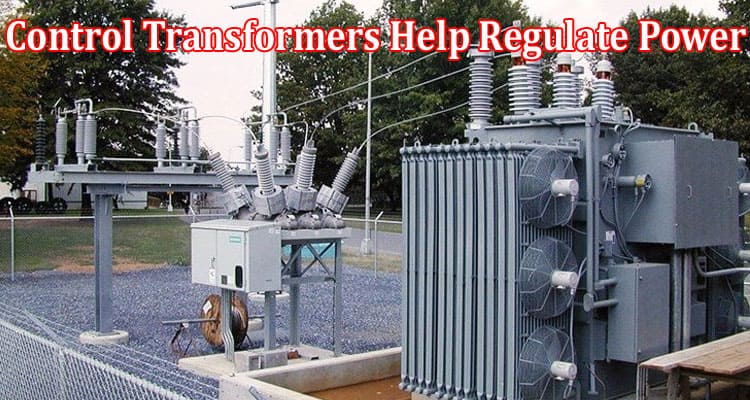How Control Transformers Help Regulate Power in Your Devices
Control transformers play a crucial role in regulating power and ensuring the smooth operation of various electrical devices. In this article, we will explore the significance of control transformers and how they contribute to the efficient functioning of electrical systems. We will specifically focus on CHINT Control Transformers, a leading brand in the industry, and highlight the benefits they offer. So let’s dive in and understand the role of control transformers in power regulation.
Understanding Control Transformers
What are Control Transformers?
Control transformers are electrical devices specifically designed to regulate voltage levels in control circuits. They are commonly used in various applications such as machinery, industrial equipment, control panels, and automation systems. Control transformers ensure that the voltage supplied to control components remains within the desired range, facilitating their optimal functioning.
How Control Transformers Work
Control transformers function based on the principles of electromagnetic induction. They consist of primary and secondary windings, each wound around a magnetic core. When an alternating current (AC) passes through the primary winding, it induces a magnetic field in the core. This magnetic field, in turn, induces a voltage in the secondary winding. The ratio of the number of turns in the primary and secondary windings determines the output voltage.
Importance of Power Regulation
Power regulation is essential to protect electrical components from voltage fluctuations and ensure their longevity. Unregulated voltage can lead to excessive heat, component failure, and overall system inefficiency. Control transformers help maintain stable voltage levels, allowing control circuits to operate safely and reliably.
Key Components of Control Transformers
Primary and Secondary Windings
The primary winding of a control transformer is connected to the power source, while the secondary winding supplies voltage to the control circuit. These windings are carefully designed to achieve the desired voltage transformation ratio. Typically, the primary winding has more turns than the secondary winding, resulting in a step-down voltage output.
Magnetic Core
The magnetic core in a control transformer is made of high-permeability materials such as laminated iron or silicon steel. It serves as a pathway for the magnetic flux generated by the primary winding. The core’s design and material properties determine the efficiency and performance of the transformer.
Voltage Regulation Mechanism
Control transformers incorporate a voltage regulation mechanism to maintain consistent output voltage levels. This mechanism involves tapping points on the secondary winding, allowing adjustments to compensate for variations in the input voltage or load conditions.
Functioning of Control Transformers
Voltage Step-Down
One of the primary functions of control transformers is to step down the voltage supplied by the main power source. This voltage reduction ensures that the control circuit receives the appropriate voltage level required for its operation. It safeguards sensitive control components from excessive voltage and prevents equipment damage.
Isolation and Safety
Control transformers provide electrical isolation between the control circuit and the main power supply. This isolation protects control devices from potential electrical faults, short circuits, and overloads in the main power system. It enhances the safety of the control circuit and minimizes the risk of electrical hazards.
Enhanced Power Quality
Control transformers contribute to improving power quality by minimizing voltage fluctuations and harmonic distortions. They provide a stable and clean power supply to the control circuit, reducing the chances of malfunctions or inaccuracies in control operations. This enhanced power quality leads to more reliable and efficient system performance.
Control Circuit Isolation
In complex electrical systems, multiple control circuits may coexist. Control transformers enable individual control circuits to operate independently, preventing interference and ensuring precise control. Each control circuit can have its dedicated control transformer, maintaining isolation and optimizing system performance.
Installation and Maintenance of Control Transformers
-
Proper Sizing and Installation
Proper sizing and installation of control transformers are crucial for their optimal performance. It is essential to consider factors such as load requirements, voltage rating, and environmental conditions during the selection process. Following manufacturer guidelines and consulting with experts can help ensure correct sizing and installation.
-
Routine Maintenance Practices
Regular maintenance is essential to extend the lifespan of control transformers and prevent operational issues. Inspections, cleaning, and testing should be carried out periodically to identify any signs of wear, loose connections, or insulation degradation. Timely maintenance can help avoid unexpected downtime and costly repairs.
-
Troubleshooting Common Issues
Control transformers may encounter common issues like overheating, voltage fluctuations, or buzzing sounds. Troubleshooting these problems requires a systematic approach, involving careful observation, measurement, and analysis. Identifying the root cause and implementing appropriate corrective measures can help restore proper functionality.
Conclusion
Control transformers are vital components in power regulation systems, ensuring the efficient and reliable operation of control circuits. By maintaining stable voltage levels, they protect electrical devices and optimize system performance. CHINT Control Transformers, with their reliability, efficiency, and compliance with industry standards, offer excellent solutions for power regulation needs across diverse applications.




